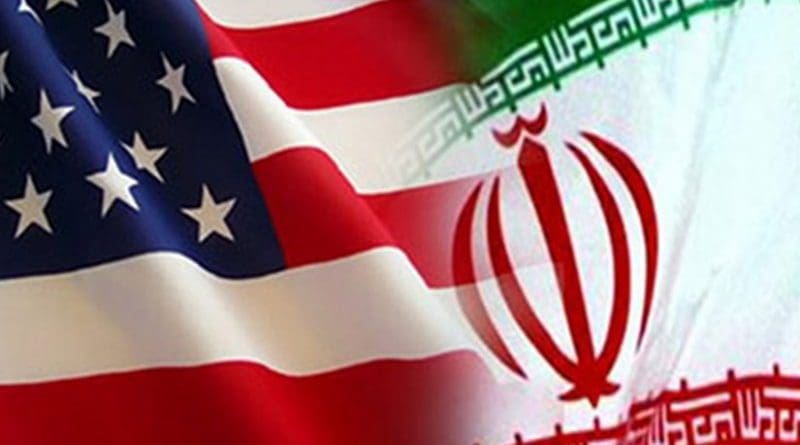Iran-US Tensions Unlikely To Spill Into War – OpEd
To the south of Georgia trouble is brewing as Iran and the US (and its allies) are almost openly engaged in a military competition around the Persian Gulf and the Strait of Hormuz.
True, Georgia does not share a border with Iran, but its close economic and cultural relations with Tehran might be further endangered. It is unlikely that the US will tolerate Georgia’s neutral position in a potential conflict between the two states. Therefore, the Georgian government will find itself in a difficult position but will most likely act according to wider US interests in the South Caucasus. Even if a military conflict does not ensue (as explained below), Georgian-Iranian relations will take a hit.
The US recently announced plans to set up a multinational military coalition to protect the waters around Iran and Yemen, particularly commercial routes where about $554 billion worth of trade, mainly oil and gas, passes through the Straits of Hormuz each year. The military confrontation between Iran and the US could cause disruption, costing the biggest trader, Saudi Arabia, $3.5 billion a week, but also negatively impacting many Asian shippers.
This comes on top of what happened last month when Iran came close to war with the US after Tehran’s unprecedented decision to shoot-down a US drone with a surface-to-air missile. Back then, the US officials, including President Donald Trump, said that this could trigger retaliatory strikes. According to various sources, Trump green-lighted a limited air-strike against Iran’s surface military capabilities but cancelled the decision some minutes later when fighters were in the air.
The root of Iranian-American tensions lies in the differences regarding Tehran’s nuclear program. Washington abandoned the nuclear agreement the world powers reached in 2015 and Iran recently announced it has reached a high level of uranium production.
The tensions, as said above, induced the US and its allies, primarily in the Persian Gulf, to create a coalition. This is a very good example of what kind of future naval coalitions the US will be able to muster to prevent a certain group of countries from controlling vital economic choke points such as the Strait of Hormuz or the Strait of Malacca in Asia. But this also raised an alarm among politicians and the world’s analytical community that we might see a military confrontation between the US (and its allies) and Iran. First, it should be emphasized that Iranians understand well that a military confrontation would be deadly for the country’s economy, leading to potential unrest in various regions. Second, a military confrontation with the US is simply beyond the Iranian resource base. However, it is also true that the US does not want to engage Iran as the latter is a completely different story from what the American forces did during the invasion of Iraq in 2003. And it is not about Iran’s far superior military capabilities than those of Iraq: the major difference lies in geographic factors.
A look at the map shows that Iran’s major population centers are surrounded by almost impregnable mountains and deserts as well as water barriers. In the west and northwest are the Zagros Mountains, which bar Iran from Iraq. In the north, the Elburz Mountains as well as Armenia’s mountainous lands serve as a defensive shield. The Caspian Sea to the north and the Arabian Sea to the south are yet more impregnable barriers. To the east and northeast lie the harsh climate of Afghanistan and Pakistan. Turkmenistan’s semi-barren steppe-lands keep Iran’s provinces more or less safe (barring occasional attacks by nomadic peoples).
The fact of being both geographically contained and geographically defended has defined the Iranian grand strategy from the ancient Persian empires to modern Iran. The country’s mountains and deserts have made it almost impossible to conquer and then keep under control. Consider, for example, several of history’s greatest conquerors. The Mongols and, later Tamerlane successfully invaded the Iranian plateau, but to keep it, they either had to deploy tens of thousands of troops (which they were unable to do) or co-opt the local population (which they did) by allowing them to participate in the country’s governance. The same goes for Alexander the Great, Iran’s most successful conqueror. Following his conquest of the land, he co-opted the local elites to hold onto the state – and after he died, Iran quickly regained its independence.
Iran and the US want to avoid a direct military clash, but also do not want to lose their face among their respective allies. Still, the attempts to diminish tensions between the two powers become less and less effective as Iran grows its nuclear-related capabilities and the US sees less and less room to entice Tehran into a mutually beneficial understanding.
This article was published at Georgia Today


Very realistic and useful.
There’s no shortage of writers who would condone any imperial action by the U.S. — skating over the tearing up of the nuclear agreement, supporting Saudi war crimes in Yemen and now further interering in the Persian Gulf by trying to round up the usual suspects to join a naval force.